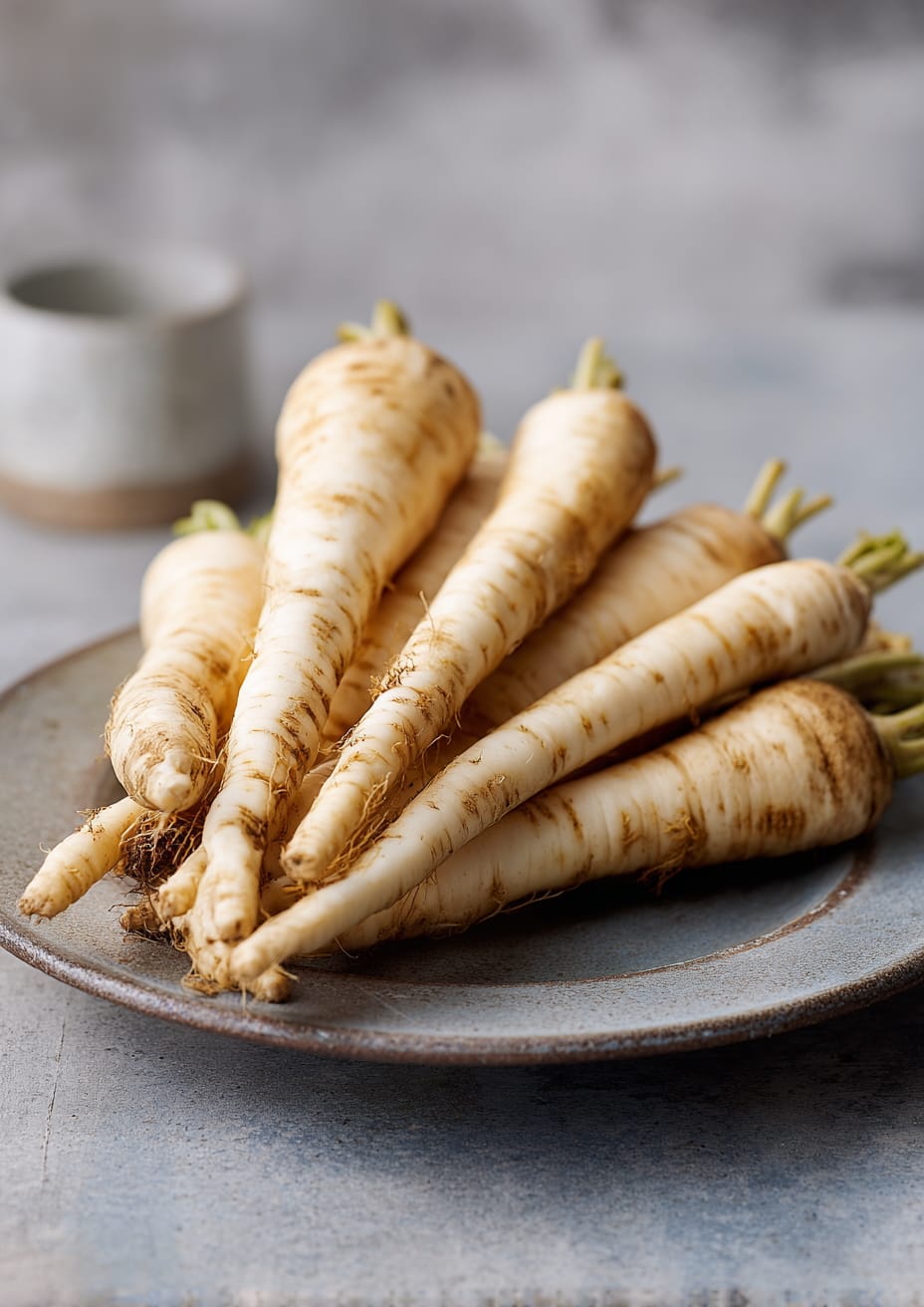Why parsnip season matters
Parsnips are available in shops almost year-round, but anyone who’s bitten into one out of season knows the difference. Early ones can taste woody and bland, while those left to grow in the right conditions become sweet, nutty and tender. Seasonality really does make the parsnip.
Table of Contents
I’ve found the most flavourful parsnips are those that have seen a touch of frost. Cold weather converts their starches into natural sugars, so they taste richer and roast to a golden caramel finish. If you’ve loved recipes like roasted parsnips with balsamic glaze, that sweetness is thanks to their seasonal timing.
The best months to buy parsnips
Parsnips are at their peak from late autumn through winter, usually November to February in the UK. By this point, the cold has done its work, and you’ll notice how much better they taste roasted or mashed. Out-of-season parsnips can be watery or fibrous, which doesn’t do justice to dishes like honey roasted parsnips with thyme and garlic.
That said, don’t completely avoid them outside of winter. With a bit of clever cooking, they can still shine. Try using them in soups or curries where their texture blends smoothly. If you’re looking for year-round cooking ideas, I’ve covered plenty in my ultimate guide to parsnip recipes: 30 must-try dishes.
Choosing and storing parsnips
Look for firm, pale roots without too many blemishes or thick cores. Thin, medium-length parsnips tend to be sweeter and easier to roast evenly. If you’ve enjoyed the crisp results in crispy roast parsnips with parmesan crust, the secret often lies in starting with the right size.
Store parsnips in the fridge wrapped in a paper bag or cloth, where they’ll last up to two weeks. Don’t wash them before storing, as excess moisture speeds up spoilage. If you do buy a big bag, you can always roast extra and use them later in dishes like spiced roast parsnips with cumin and coriander.
Cooking ideas through the seasons
When they first come into season in autumn, I like to pair them with warming flavours like rosemary, sage and mustard. By the middle of winter, they’re sweet enough to stand up to bolder glazes like soy and ginger. For spring, lighter dressings such as lemon or herbs work best if you’re determined to keep them on the table a little longer.
If you’d like a set of recipes to get you started, I’ve gathered them all in our 7 best roasted parsnip recipes, from sticky soy to fragrant rosemary. It’s proof that one seasonal root can wear many flavours well.
Frequently asked questions
Do parsnips taste better after frost?
Yes, and it’s not just a saying. The cold turns starch into sugar, making parsnips sweeter. This is why winter ones taste so good roasted. If you want recipes that really highlight this sweetness, try maple glazed parsnips with rosemary.
Are parsnips available all year round?
Yes, but their flavour is best in winter. Out-of-season ones can be a bit bland. To see how to make the most of them anytime, my nutrition guide: are parsnips good for you? covers both health benefits and cooking flexibility.
Can I freeze fresh parsnips?
Yes. Blanch them for a couple of minutes, dry, then freeze. They’ll keep for months and roast well straight from frozen. If you’d rather start with a cooked batch, par-roast them like I do in roast parsnips with mustard and sage, then reheat later.
Are smaller parsnips sweeter?
Generally, yes. Smaller roots usually have a more delicate flavour and finer texture, perfect for sides like sticky soy and ginger roast parsnips. Larger ones can be tougher and more fibrous in the core.
Tips for enjoying parsnips in season
If you can, buy them from local markets in late autumn and winter — the flavour difference is noticeable. Always roast them on a preheated tray to get that caramelised edge. And don’t be afraid of mixing sweet and savoury glazes; parsnips are one of the few vegetables that carry both equally well.
Winter parsnips keep well, often up to a month if stored cool and dry. If yours start to go soft, peel and roast them immediately — their flavour will still come through. Parsnips are naturally rich in fibre, potassium and vitamin C, with only moderate calories. They make a nutrient-packed seasonal choice. For a detailed look at their nutritional value, see my nutrition guide: are parsnips good for you?.

